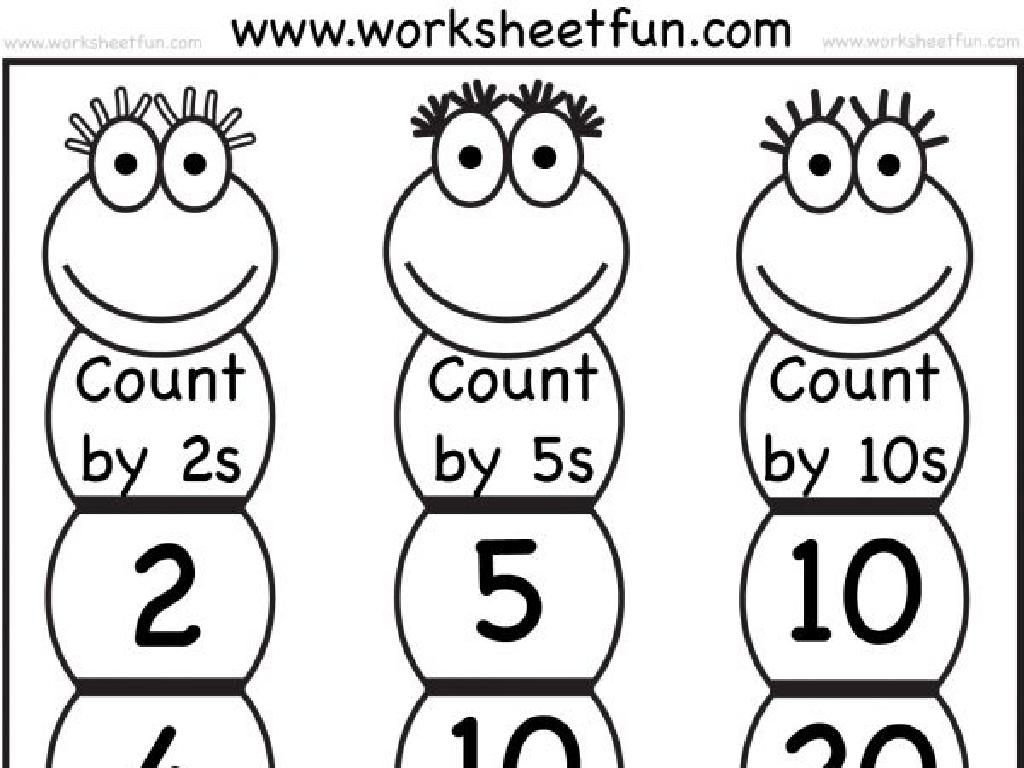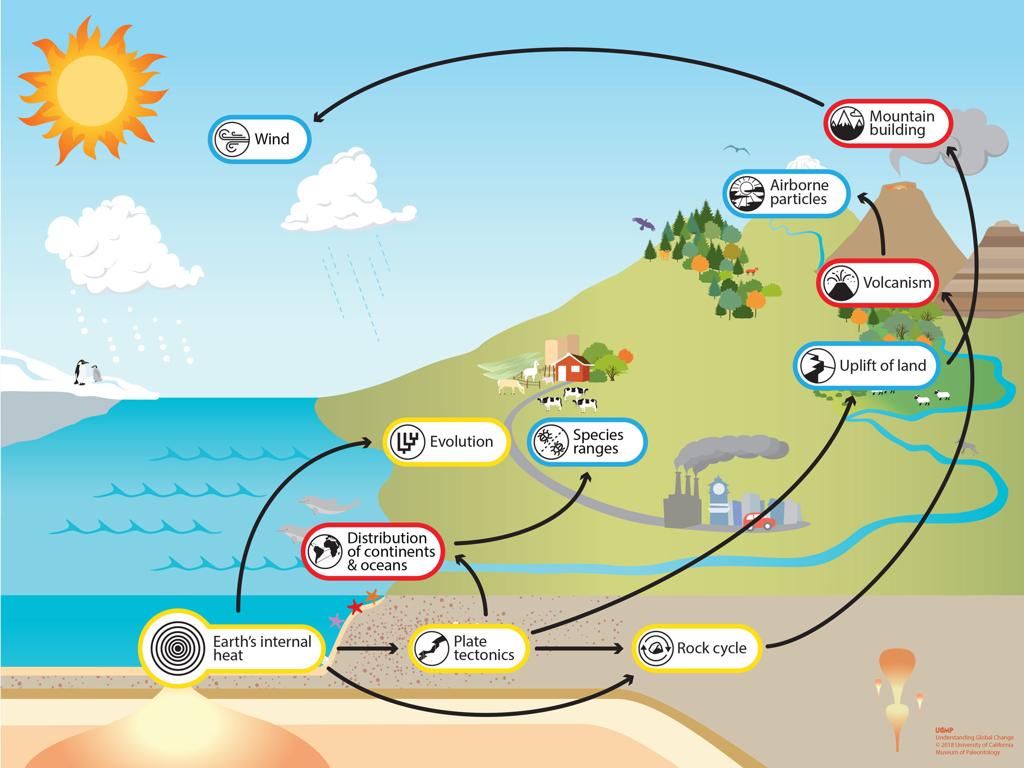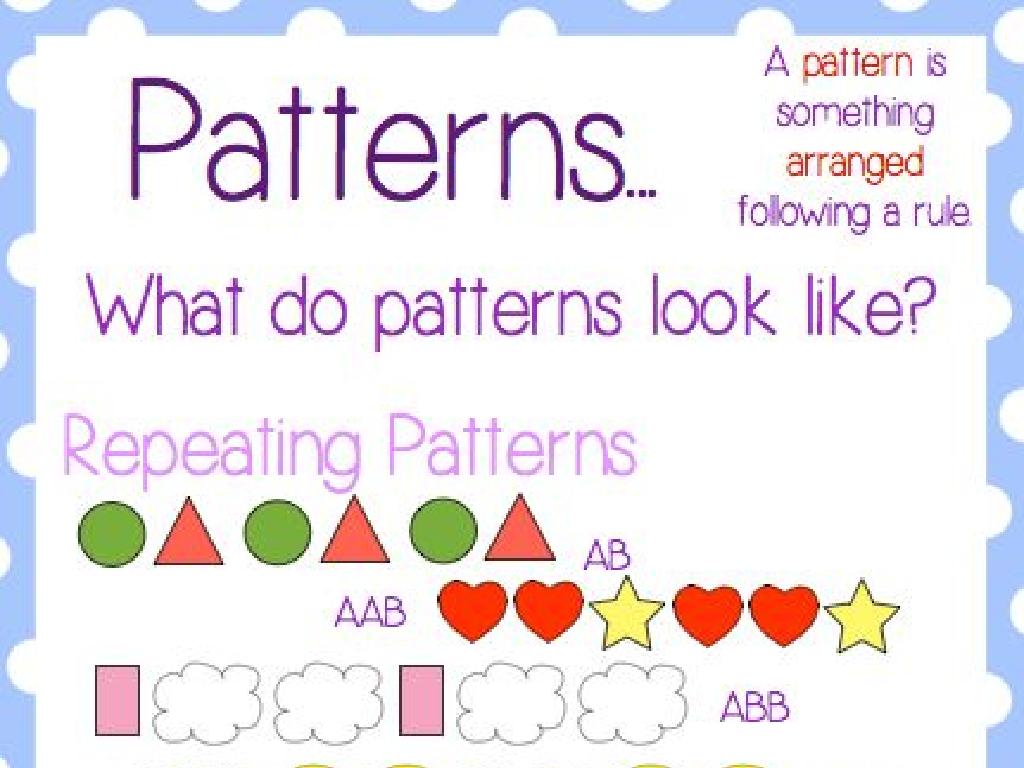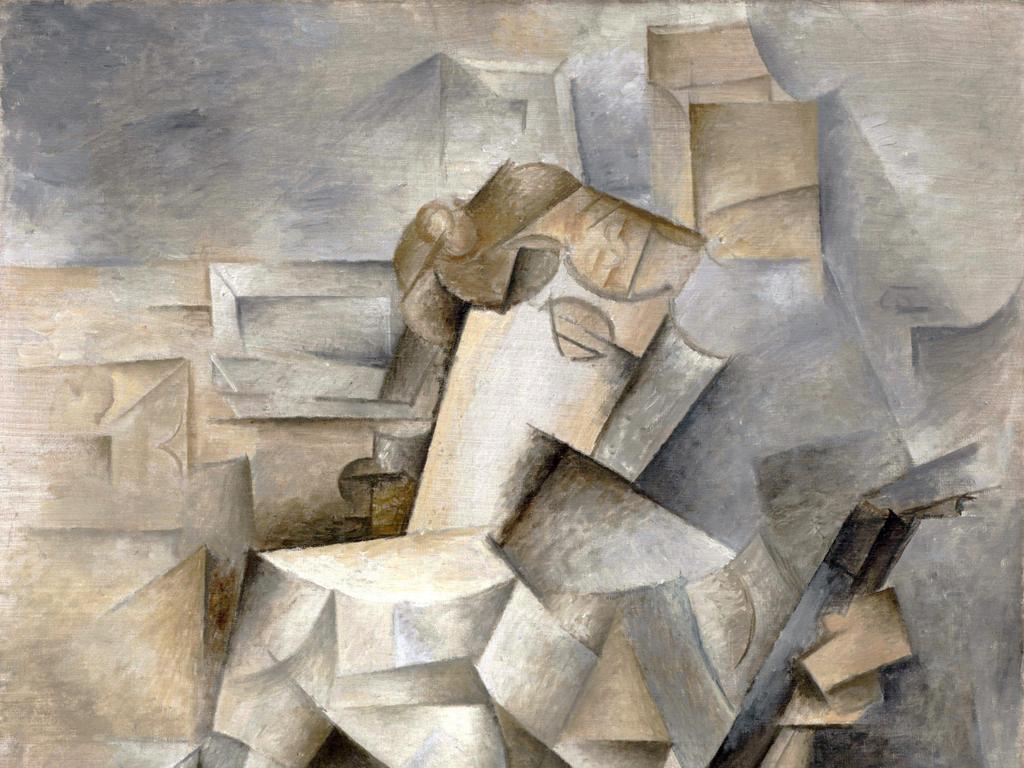Change-Of-State Diagrams: Solid, Liquid, And Gas
Subject: Science
Grade: First grade
Topic: Changes Of State
Please LOG IN to download the presentation. Access is available to registered users only.
View More Content
Exploring States of Matter
– What are solids, liquids, and gases?
– Solids are hard and keep their shape, liquids flow and fill containers, gases spread out everywhere.
– How do things change state?
– Heat can melt solids to liquids and boil liquids to gases. Cold can freeze liquids to solids.
– Fun experiments with states of matter
– We’ll do fun activities like melting ice and watching water vapor!
– Becoming a junior scientist!
|
This slide introduces the concept of states of matter to first graders, aiming to spark their curiosity about the physical world. Begin by explaining that everything around us is made of matter and can exist in different forms: solid, liquid, and gas. Use relatable examples like ice (solid), water (liquid), and steam (gas) to illustrate these states. Discuss how adding or removing heat can cause matter to change from one state to another, such as ice melting into water or water evaporating into steam. Plan simple, safe experiments to demonstrate these changes, like melting ice cubes or observing condensation, to engage the students and solidify their understanding. Encourage them to observe and ask questions like scientists.
Exploring Solids
– Solids are hard and keep shape
– Like blocks and books, they don’t change shape easily
– Solids don’t move on their own
– Unlike water, solids like desks don’t flow
– Name classroom solids
– Think of things we use every day, like pencils and chairs
|
This slide introduces the concept of solids to first graders. Begin by explaining that solids are objects that are hard and maintain their shape, unlike liquids or gases. Use classroom objects as relatable examples, such as a desk or a book, to illustrate the concept. Encourage the students to look around and identify solid objects, reinforcing their understanding that solids do not move by themselves. This activity will help them grasp the basic properties of solids and differentiate them from other states of matter. Make sure to provide guidance and affirmation as they explore and learn about solids in their immediate environment.
Let’s Look at Liquids!
– Liquids flow and fill containers
– Like water in a cup, milk in a bowl
– Softer than solids
– Unlike ice, liquids can be squished
– Everyday drinking liquids
– Water, juice, milk are liquids we drink
– Understanding liquid properties
|
This slide is designed to help first graders understand the properties of liquids in a simple and relatable way. Start by explaining that liquids, unlike solids, can move around and change shape to fill up the space of whatever they’re in, like water in a cup or milk in a bowl. Highlight that liquids are softer and can be squished, unlike hard solids like ice. Ask students to think about and share what liquids they drink every day to make the concept more personal and memorable. Use this opportunity to introduce the idea that liquids are one of the states of matter and have unique properties that differentiate them from solids and gases.
Gases Are Everywhere!
– Gases are invisible but all around
– Gases expand to fill spaces
– Examples of gases we encounter
– Balloons, bubbles, and the air we breathe
– Breathing in: Our air is a gas!
– Oxygen is a gas that we need to live
|
This slide introduces the concept of gases to first graders by explaining that gases are a state of matter that is all around us, even though we can’t see them. Emphasize that gases have the ability to spread out and fill up any space they are in. Ask the children to think of examples of gases, such as the air in balloons or bubbles, and remind them that the air we breathe is also a gas, specifically oxygen, which is essential for life. This will help them understand the presence and importance of gases in everyday life.
Changing States: Solid to Liquid
– Solids melt into liquids when warm
– Like chocolate going from hard to gooey
– Example: Ice becomes water
– Ice is hard but turns to liquid water
– Watch an ice cube melt
– We’ll do an experiment with ice cubes
|
This slide introduces the concept of phase change from solid to liquid, specifically designed for first graders. Begin by explaining that heat can turn solids into liquids, using terms they can understand, like ‘warm’ and ‘melt’. Use familiar examples, such as ice melting into water, to illustrate this change. You can perform a simple demonstration with an ice cube to visually show the melting process. Encourage the students to touch and see the ice cube before and after it melts to understand the change in state. This hands-on experience will help solidify their understanding of the concept of melting. Make sure to supervise the activity to prevent any slips or spills.
Changing States: Liquid to Gas
– Heat turns liquid into gas
– Like when water gets hot on the stove!
– Example: Boiling water becomes steam
– Steam is what you see above a kettle
– Observing water turn to steam
– We’ll do a fun experiment to see this
|
This slide introduces the concept of liquids turning into gases when heated, using the familiar example of boiling water to produce steam. Emphasize that heat energy causes the liquid particles to move faster and spread apart, becoming a gas. The experiment should be conducted with safety in mind, under adult supervision, using a kettle or a pot on the stove to heat water until it turns into steam. Explain that the steam is water in its gas form. This visual demonstration will help solidify the concept of state change from liquid to gas for the students. Make sure to ask the students to observe carefully and describe what they see during the experiment.
Changing States: Gas to Liquid
– Gas turns to liquid when cold
– Like when you see water on a cold window
– Steam to water example
– Steam from a kettle cools into water droplets
– Watch a cool science trick!
|
This slide is aimed at helping first graders understand the concept of condensation, where a gas turns into a liquid when it gets cold. Use everyday examples like a cold window collecting water to illustrate this change. Show a simple experiment where steam from a kettle turns into water droplets on a cold surface. This visual demonstration will help solidify the concept. Encourage the children to ask questions and think of other examples where they have seen gas change into a liquid in their daily lives.
Changing States: Liquid to Solid
– Liquids can freeze into solids
– When it’s very cold, liquids like water become hard.
– Water turns to ice when cold
– Just like water in a freezer becomes ice cubes!
– Let’s make ice together!
– We’ll use water and a freezer to see how it changes.
|
This slide introduces the concept of liquids freezing into solids, which is a fundamental part of understanding states of matter. Use water as a relatable example since it’s a common liquid that students see freeze into ice. The class activity involves making ice, which will help solidify (pun intended) their understanding of the change from liquid to solid. Provide clear instructions for the activity: fill an ice tray with water, place it in the freezer, and observe the change after a few hours. Discuss safety around cold temperatures and handling ice. Encourage students to think of other liquids that freeze and what they might become when solid.
Change-of-State Diagrams: Magic of Science
– Solids, liquids, and gases change
– Solids melt into liquids; liquids evaporate into gases
– Science is like magic!
– These changes seem magical but are natural science processes
– Drawing our change-of-state diagrams
– We’ll use crayons and paper to draw how water changes from ice to water to steam
|
This slide introduces the concept of change-of-state diagrams to first graders, emphasizing the transformation between solids, liquids, and gases. The aim is to instill a sense of wonder and curiosity by comparing these changes to magic, while explaining that they are scientific processes. During the class, guide the students through drawing their own diagrams, showing how a solid like ice melts into water and then evaporates into steam when heated. This hands-on activity will help them visualize and understand the concept of matter changing states. Encourage questions and ensure that each student is engaged in the drawing activity.
Magic States: Watch Water Transform!
– Observe ice melting into water
– See water change to steam
– Watch steam condense to water
– Safety is our top priority!
– Listen and follow along for a safe experiment.
|
This class activity is designed to help first graders visually understand the concept of state changes in matter. Students will observe ice melting (solid to liquid), boiling water to produce steam (liquid to gas), and then condensing steam back into water (gas to liquid). It’s crucial to emphasize safety and ensure that students are following instructions and not touching any hot surfaces. Teachers should prepare different stations for each state change and guide the students through the observations, asking them to describe what they see and feel (e.g., ice is cold, steam is hot). Possible activities include touching the ice and feeling the cold, watching the steam rise from the boiling water, and seeing the steam turn back into water on a cool surface. This hands-on experience will help solidify their understanding of the states of matter and their transformations.



/mla_works_cited_example.png)

